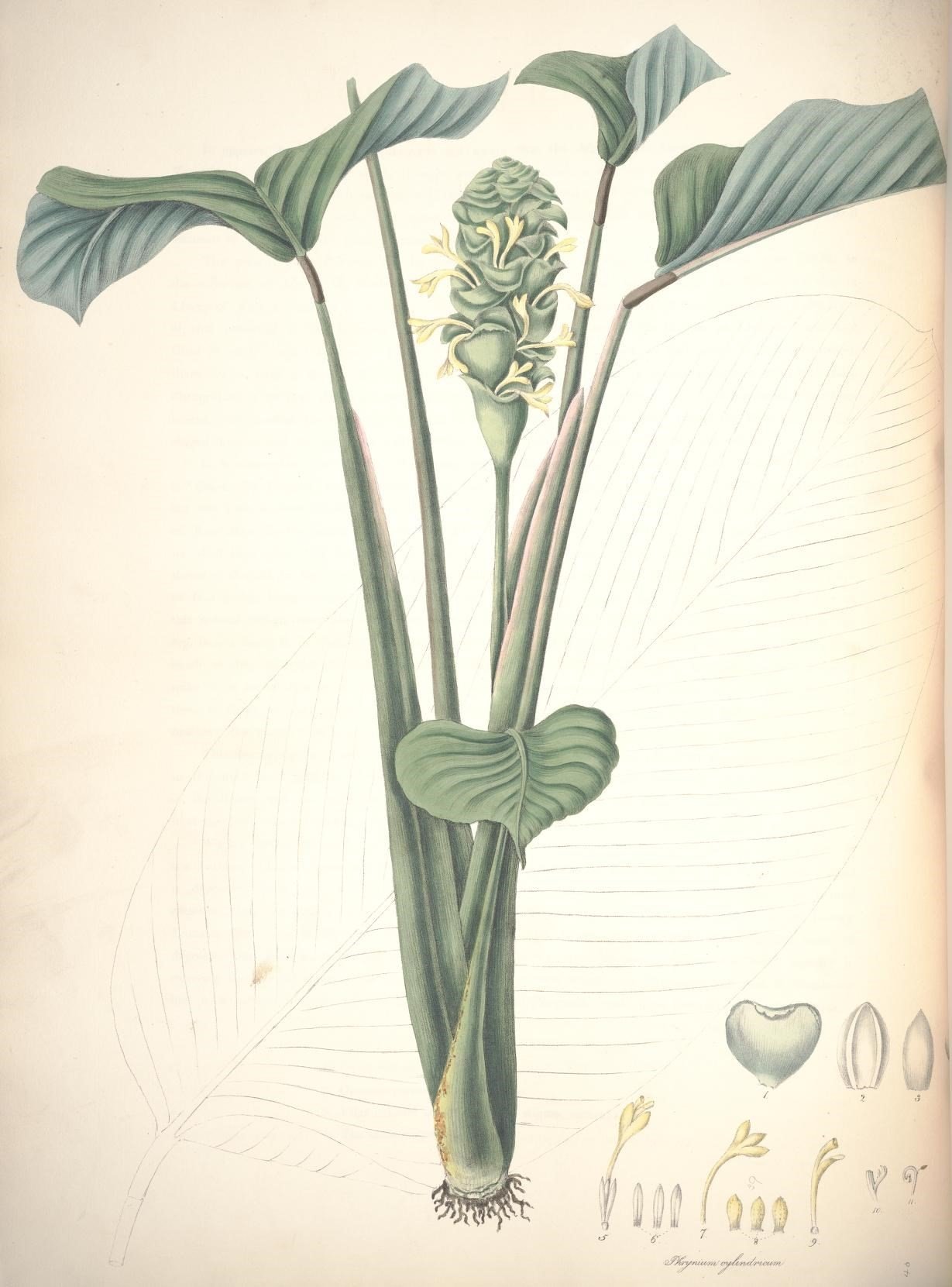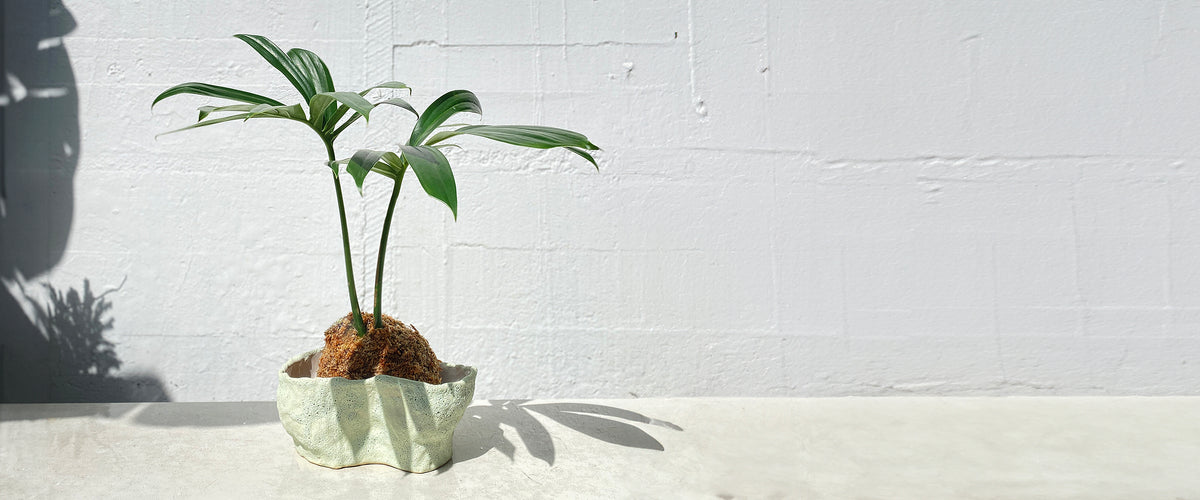Marantaceae- Maranta, Calathea, Ctenanthe
Plant Family: Marantaceae
Common Name: Prayer Plants

The Marantaceae family consists of 31 genera and some 530 species. Plants in this family are typically grow in the rainforest understorey, and often have unusual and beautiful leaf colouration. Some of the popular houseplant genera you may recognise are Calathea, Ctenanthe, Goeppertia, Maranta and Stromanthe
Things have been moving and shifting in this family, and Calathea –which we all know and love- have really had the rug pulled out from under them. The Calathea genus contained some 260-300 species native to tropical South America, until 2012- when 200 species were reclassified into the genus Goeppertia. Instead of flipping tables, nurseries globally have chosen to largely ignore this change in nomenclature, and continue to label the many common varieties (such as concolor, insignis, louisae, makoyana, ornata, orbifolia, rufibarba, zebrina) by their original genus, keeping things nice and easy for customers.
The family marantaceae belongs to the order Zingiberales, which contain many popular ornamentals and edibles such as banana, heliconia, bird of paradise, cardamom, galangal, ginger and turmeric.
This family is often referred to as ‘prayer plants’ due to the way their leaves rise up at night, somewhat resembling hands in prayer. Nyctinasty, or ‘plant sleeping’ is a circadian rhythmic movement that is calibrated by changes in daylight and temperature. The physical movement of the leaf hinges at a cluster of specialised cells caused the pulvinus. In marantaceae, the pulvinus can be easily observed at the top part of the petiole (just below the leaf), and control the prayer-like rising of falling of the leaves through turgor pressure.
It is not clear why prayer plants move this way. Many plants curl their leaves or close their flowers at night, and many do not. It is hypothesised that nyctinasty has some evolutionary benefit, likely by protecting the leaves from herbivory or damage while the plant is not photosynthesising. Perhaps this mechanism is why marantaceae can afford to have such lovely, delicate leaves.
Marantaceae like….
The goldilocks spot in your home. Bright, indirect light to shade, but no direct sun. Soil to be kept evenly moist over spring-summer, but not wet (and they might show distaste for your tap water). Humidity, but not rooms with dramatically fluctuating temperature. And don’t even think about keeping it near a fan, A/C, door, or draughty corridor.
Not too hard.. right?
However, once you find a good spot for your plant, they should thrive there with little needs for years.
Temperature/ Humidity
Warm and humid is best. These plants will be happiest if temps stay above 15°C. Use a humidifier, or mist a few times per week and keep over a pebble tray, or keep in the bathroom to increase humidity.
Watering
Water evenly once the top inch of soil has almost dried out, slightly less over winter. If you suspect your tap water is a little heavy, use filtered or rain water to mitigate mineral build up in the soil.
Soil
Marantaceae do well in a soil that strikes a balance between being light and airy, and retaining some water. Houseplant mix, cut with a little fern fibre and perlite has worked a treat for us. Most houseplants thrive in soil that has a pH of 6.5, and marantaceae are no different.
.
Flowering
Flowers, often small and delicate, appear on a spike or panicle. Three petals make up the tube-like shape, usually white-purple in colour.
All marantaceae have an explosive pollination system. The style is held back like a stretched spring, with pollen deposited in a depression behind the stigma. The pressure of a visiting pollinator releases the style which snaps forward into a coil, punching the stigma into contact with the pollinator. This gives a one shot chance for the flower to give and receive pollen, as once the flower has been tripped, it can no longer return to the original position.
Fertilisation
During the warmer seasons, feed monthly with a dilute, balanced liquid fertiliser. Let rest over winter.
Propagation
Most marantaceae, such as calathea, goeppertia, and stromanthe grow from rhizomes or tubers, and can be propagated by splitting. If your plant is getting crowded in its pot, and the base of the plant looks as though growth is occurring from more than a few clusters, you could give splitting a go.
Gently unpot your plant and tease the roots apart. It should be easy to separate a few clusters. Repot into a well-aerated houseplant mix, and treat as an adult plant.
Some marantaceae, such as marantas, have nodes, and can be propagated via node cuttings. Using a clean blade, cut a portion of the stem below a node that has a couple sets of leaves and a growing tip. Remove the lower set of leaves, and put in water, or dip in rooting hormone and plant into soil.
Note: sometimes chance mutations in tissue culture produce unique foliage patterns, when these arise the new cultivar is often patented, and sold to nurseries. For this reason, certain cultivars are labelled saying they cannot legally be propagated and sold.
Troubleshooting
Brown edges Calathea (or Goeppertia) are notorious for developing brown leaves or edges. This may be a symptom of drying out, insufficient humidity, mineral build up in the soil. Too much direct sun can also cause these crispy edges.
Brown patches Can occur with sunburn. It will be obvious this is the cause if the patches appear on the same aspect, and on leaves closest to the light.
Yellowing Usually a sign of overwatering, let your plant dry out a little more between waters.
Faded colouration Often a sign of too much light. Move your plant further from the window. These guys are very tolerant of shady spots.
Toxicity
non toxic to all pets
References:
Borchsenius, F., Suárez, L. S. S., & Prince, L. M. (2012). Molecular phylogeny and redefined generic limits of Calathea (Marantaceae). Systematic Botany, 37(3), 620-635.
https://en.wikipedia.org/wiki/Calathea
https://en.wikipedia.org/wiki/Goeppertia
https://en.wikipedia.org/wiki/Marantaceae
https://en.wikipedia.org/wiki/Nyctinasty
https://www.aspca.org/pet-care/animal-poison-control/toxic-and-non-toxic-plants/m?&
https://www.gardenersworld.com/how-to/grow-plants/how-to-grow-calathea/#problems
Jerominek, M., & Claßen-Bockhoff, R. (2015). Electrical signals in prayer plants (Marantaceae)? Insights into the trigger mechanism of the explosive style movement. PloS one, 10(5), e0126411.
Kennedy, H. (1978). Systematics and pollination of the" closed-flowered" species of Calathea (Marantaceae) (Vol. 71). Univ of California Press.
Nguyen, H. C., Lin, K. H., Hsiung, T. C., Huang, M. Y., Yang, C. M., Weng, J. H., ... & Chang, K. C. (2018). Biochemical and physiological characteristics of photosynthesis in plants of two Calathea species. International journal of molecular sciences, 19(3), 704.
